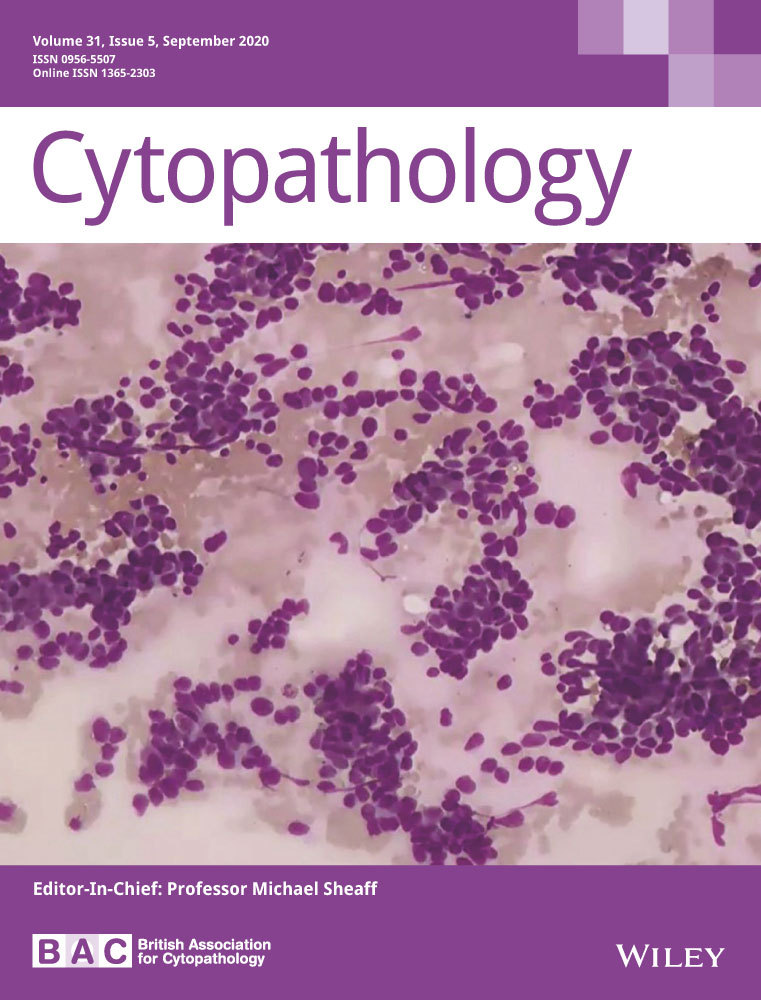The utility of cell blocks for international cytopathology teleconsultation by whole slide imaging
Abstract
Introduction
Telecytology for second opinion consultation has largely been limited by technical issues, such as the inability to focus well on cellular material. Nevertheless, international telecytology consultation was undertaken at our institution with partners in China and Italy. To overcome issues with scanning cytology slides, we adopted a cell-block (CB) preference for teleconsultation.
Methods
Telecytology consultation cases received over a 7.5-year period were retrospectively reviewed. Cytology glass slides were scanned without Z-stacking using different whole slide scanners. For one referring site, only haematoxylin-eosin-stained CBs were scanned, as well as immunostains requested by consultants. For another host centre, aspirate smears were also scanned in some cases.
Results
A total of 51 non-gynaecological cases (44 CB only) were evaluated from 48 patients. The specimens included pleural fluids (19), pancreas (14), lymph nodes (6), peritoneal fluids (2) and miscellaneous samples (10). The cytological diagnoses spectrum included 16 (31.37%) cases positive for malignancy, 7 (13.72%) positive for neoplasm, 6 (11.76%) suspicious for malignancy, 10 (19.60%) atypical, 10 (19.60%) negative for malignancy and 2 (3.92%) non-diagnostic. In 42 (82.35%) cases, immunocytochemistry was requested. Turn-around-time ranged from 1.5 to 306 hours.
Conclusions
Our experience shows that international telecytology for consultation purposes involving non-gynaecological cases is feasible. A second opinion interpretation was rendered in the majority (64.7%) of cases. Utilising CB only for cytology consultations by whole slide imaging solved focus issues that typically plague evaluation of cytology aspirate smears.
Abstract
The role of telecytology for consultation is emerging. This paper describes the authors experience with the use of cell blocks and whole slide imaging for international telecytology consultation and outlines key factors responsible for a successful telecytology consultation service at an academic institution.
CONFLICT OF INTEREST
Liron Pantanowitz is a consultant for Hamamatsu and on the medical advisory board for Leica, Ibex and Hologic.
Open Research
DATA AVAILABILITY STATEMENT
Data supporting findings of this study will be available upon request to the corresponding author Liron Pantanowitz.




